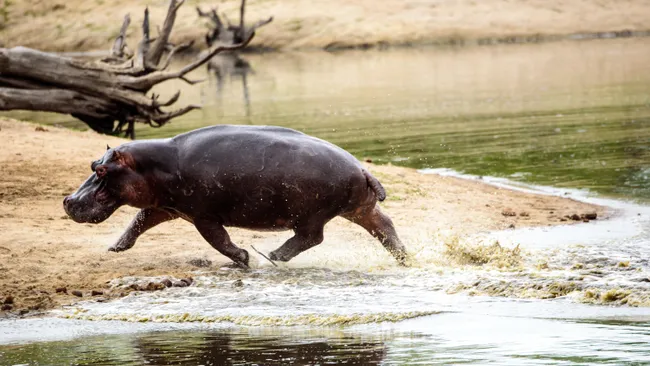Researchers have discovered that, unlike other four-legged mammals, hippopotamuses trot at high speeds and become airborne for "quite a large amount of time."
Hippos weigh as much as a medium-size car, but that doesn't stop them from completely lifting off the ground when hitting top speeds, new research has found.
Turns out, these bulky creatures can go airborne for "quite a large amount of time," scientists say.
The researchers revealed that the common hippopotamus (Hippopotamus amphibius) uses a two-beat gait called a trot, in which diagonal limbs move forward at the same time.
That's different from some other four-legged animals like elephants, which walk using a four-beat gait with the sequence left hind foot forward, followed by left front, right hind and then right front.
"Hippos basically only trot," study lead author John Hutchinson, a professor of evolutionary biomechanics at the Royal Veterinary College in the U.K., told Live Science.
"And what's neat about that is that they do that throughout their whole speed range, as far as we can tell, which is unusual for animals."
Source
Hippos weigh as much as a medium-size car, but that doesn't stop them from completely lifting off the ground when hitting top speeds, new research has found.
Turns out, these bulky creatures can go airborne for "quite a large amount of time," scientists say.
The researchers revealed that the common hippopotamus (Hippopotamus amphibius) uses a two-beat gait called a trot, in which diagonal limbs move forward at the same time.
That's different from some other four-legged animals like elephants, which walk using a four-beat gait with the sequence left hind foot forward, followed by left front, right hind and then right front.
"Hippos basically only trot," study lead author John Hutchinson, a professor of evolutionary biomechanics at the Royal Veterinary College in the U.K., told Live Science.
"And what's neat about that is that they do that throughout their whole speed range, as far as we can tell, which is unusual for animals."
Source




















